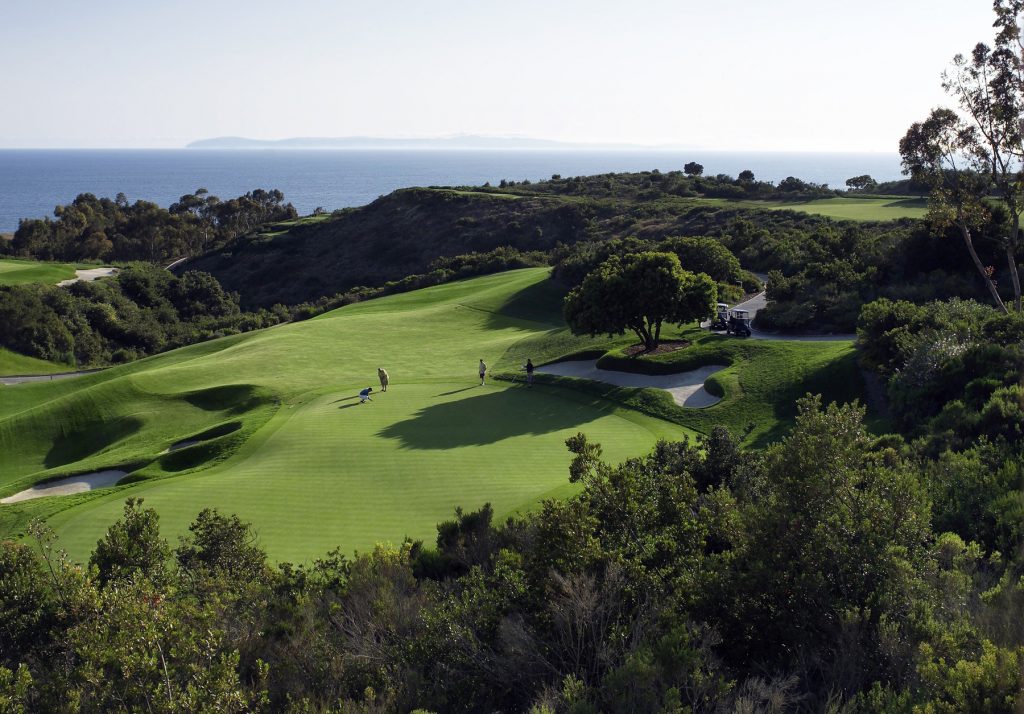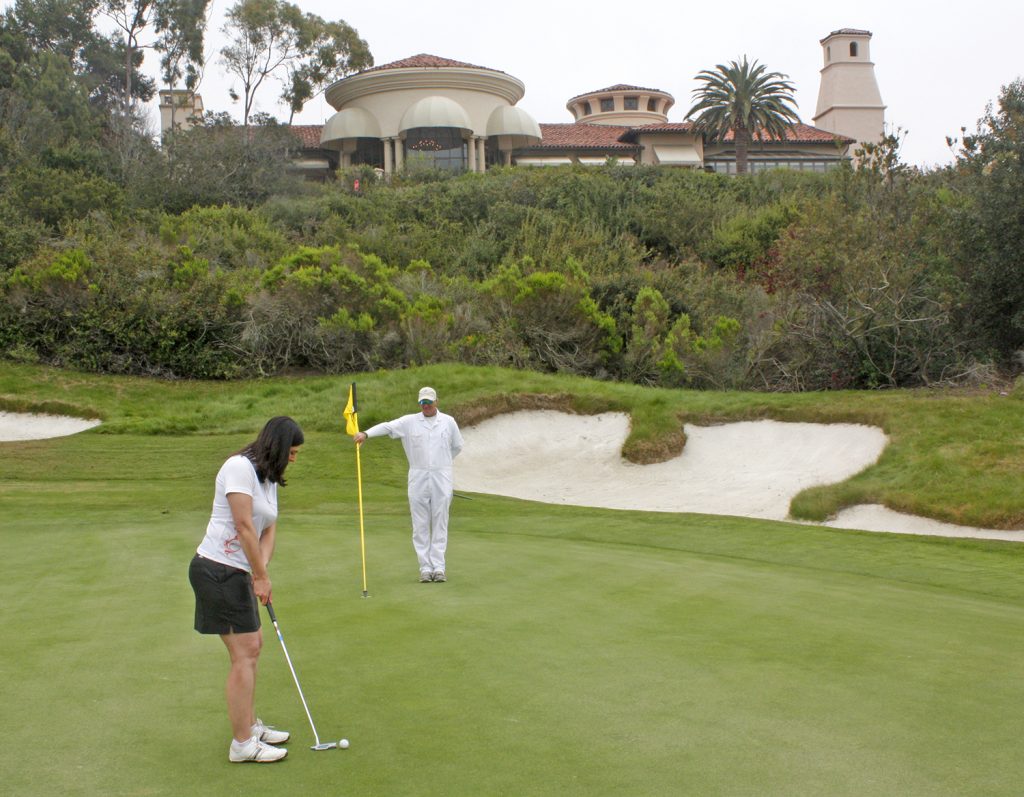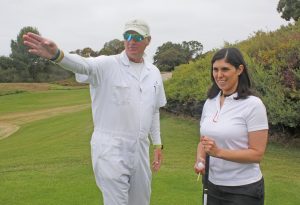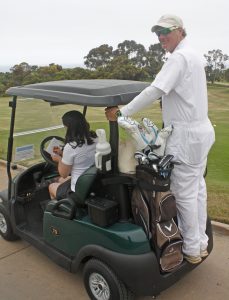
Tom Fazio is a legend in the golf world—not for playing golf, but for designing stunning golf courses that, as he puts it, “reflect the natural beauty of their environments.” He’s got more designs on Golf Digest’s list of “America’s 100 Greatest Golf Courses” than any other living designer.
Pelican Hill Resort has two of his best courses: the par 71 Ocean North course, opened in 1993, and the Par 70 Ocean South course, opened in 1991. The Ocean North course features panoramic views from every hole, while the Ocean South course takes you closest to the water.
Navigating the courses can be tricky, especially for first time Pelican Hill players, or even returning golfers who need reminders on everything from what club to use to where a green slopes.
That’s where a forecaddie comes in. No, not just a caddie, a forecaddie.
As an occasional duffer who grew up watching Arnold Palmer thrill his army of fans and marveled at the way Tiger Woods drove a green with ease, I’m familiar with a caddie that carries a pro’s clubs and advises on various elements of the game.
However, the term “forecaddie” was new to me until I learned about the forecaddie program at Pelican Hill Golf Course.

According to Pelican Hill, “the goal of the forecaddie is to enable guests to enjoy the best round of golf possible. Golf forecaddie services are offered only at the finest country clubs and resorts. The forecaddies add an extra element of course knowledge, allowing golfers to concentrate on their game and ride in the comfort of their golf cars. Forecaddies perform a variety of support duties, from finding golf balls to assisting with club selection. For each hole, the forecaddie goes ahead of the golfer to mark shots where they land.”
“The forecaddie program has been going on here since 2008. They ride on the back of the cart and help you get around the golf course,” explained Robert Ford, general manager of golf operations at Pelican Hill. “It’s been a nice amenity here.”
Ford said that when a golfer makes a tee time reservation, they are asked if they also want to reserve a forecaddie.
 “Some people are intimidated,” he said. “Most of the golfers that play here have over a 20 handicap, and they wonder if they will be too embarrassed to have a caddie. It can really help—it will save them shots knowing the terrain, the caddie can provide strategies for each hole. They play the courses here so they learn the rolls and wind directions, and when they are ahead of you they’re watching the shots because there are areas where your balls can get lost. It speeds up play. And the forecaddie engages with the players. They have stories—some have caddied on the tour and guests love to hear those stories.”
“Some people are intimidated,” he said. “Most of the golfers that play here have over a 20 handicap, and they wonder if they will be too embarrassed to have a caddie. It can really help—it will save them shots knowing the terrain, the caddie can provide strategies for each hole. They play the courses here so they learn the rolls and wind directions, and when they are ahead of you they’re watching the shots because there are areas where your balls can get lost. It speeds up play. And the forecaddie engages with the players. They have stories—some have caddied on the tour and guests love to hear those stories.”
Ford noted that many Pelican Hill members have their preferred caddies. During the summer, Pelican Hill has an average of 50 forecaddies on the course every day, more if it’s a tournament.
It takes four to six weeks to be a certified forecaddie. They must pass tests on the course ranging from putts to interaction with guests. Only one out of eight candidates will survive the process to become a certified forecaddie. 
One of those survivors is Gio, a popular Pelican Hill forecaddie who accompanied me and Kate Starr out to the golf course to play a couple of holes so I could watch a forecaddie in action.
Gio certainly knew his stuff, and the course, offering advice and suggestions on club use and where to aim a putt. His upbeat personality and can-do attitude was also helpful in making the game more fun.
The cost for a forecaddie is $45 per player ($90 for a twosome), with a minimum recommended tip of $35 per player.
“Whenever I go to a facility I take one,” said Ford. “It puts you at ease, it relaxes you, calms you down. You have someone to talk to about the course.”
And about your obsession with Arnold Palmer.
For more information about the Pelican Hill forecaddie program, visit GolfPelicanHill.com.




